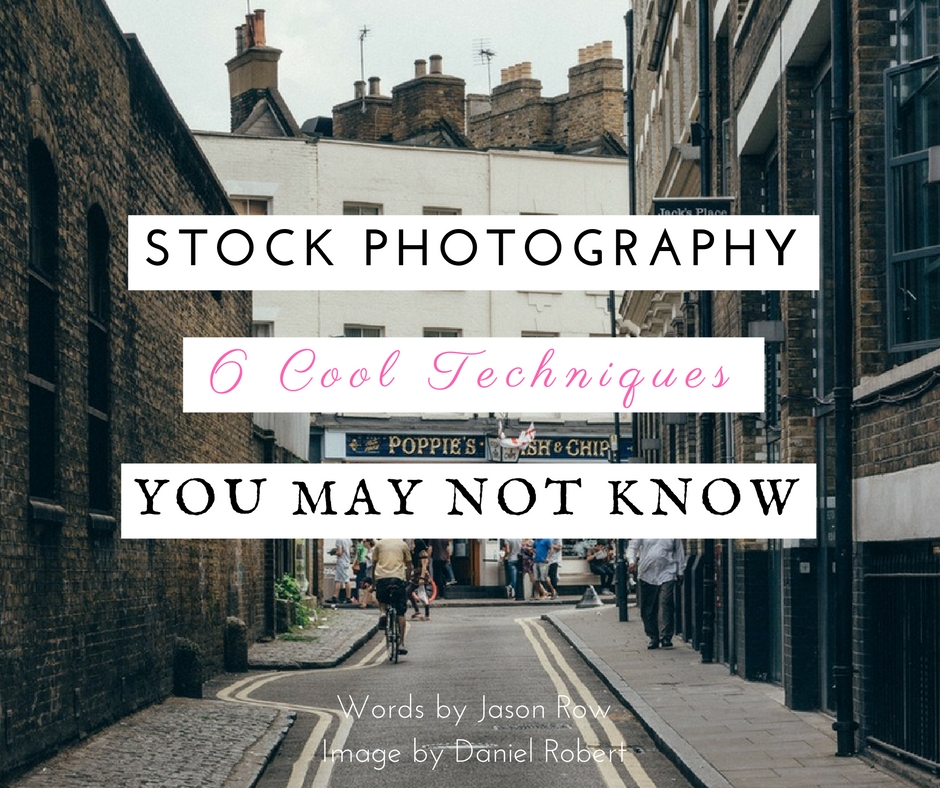How To Do Stock Photography – Your Guide To Getting Your Foot In The Door
Wanna sell photos and get pumped about your photographs?
Think your photography's good enough to put in front of agencies? Cool. This guide's for you then, my friends.
Well, whatever your feelings are towards stock agencies, they're here to stay. By that, I mean micro stock agencies are here to stay.
Quite a while ago I wrote an article as to why you can make money in the micro stocks, but despite their “pile 'em high and sell 'em cheap” appearance, getting accepted can be difficult.
So, once you are accepted, you've got to try and improve your chances of getting actual paid work.
In this guide how to do stock photography, we are going to look at 6 techniques to improve your chances in the stock photography business.
Further Learning
If you're seriously looking into stock photography, learning the Art of Cityscapes could be just for you?
Why? Because although there is no area or genre for stock images, it's a place to start. It can help build your abilities, confidence and just get 100% comfortable with your camera, so that when you're submitting your best work, it shows!
1. Meticulous Post Production
The Test
Ok, so before you run a mile because you're imagining a huge exam hall from your school days, relax a moment, it's not like that, at all!
All image agencies will require you to pass a quality test before accepting you. For this test, you will be expected to upload 10-20 images, fully prepared to the agencies guidelines.
Guidelines are there for a reason, and that is to ensure that when reviewing your images, they have their standard template to judge for themselves what they like and what they aren't so keen on.
Top Tip!
Before starting, pay very close attention to what the agency requirements are, they will vary.
Some might expect an sRGB color space, some Adobe RGB.
Some will have minimum pixel dimensions, an important factor if you crop your images.
As well as making sure your shots adhere to the guidelines you must ensure the images are both sellable and technically perfect. Sending 10 images of your cat will be an instant rejection (i'm sure you don't need me to tell you this).
You need to show you have a wide repertoire within your field.
- For technical perfection your images must be perfectly sharp – don’t send arty out of focus stuff for acceptance, some reviewers will just not get it.
- The exposure must be within the histogram limits, no clipping.
- Color must look natural with no over saturation.
- There must also be no dust bunnies or other blemishes in the shot. Look at each one at 100% view before sending them.
NOTE:
You will need to adhere to the same standards once you have been accepted to the agency.
[url=https://flic.kr/p/MPVU7][img]https://c3.staticflickr.com/1/199/518593898_965a0a7585_z.jpg[/img][/url]
Be meticulous with every image you upload. By Miquel C.
2. Know Your Niche In Photography
Learning how to do stock photography is about knowing your niche. What's your interest or focus?
If your thing is urban photography, stick with images from that niche, at least until you get established. Sending images from a field where you are out of your comfort zone will increase the likelihood of rejection. Just some common sense will serve you here.
Photographers! Think Outside The Box
In your chosen field, look through what the agency already has and try to be a little different.
Try to avoid the clichés – i.e. try to think of different ways of portraying the “clichéd” image. These types of shots can be big sellers.
3. The Ins and Outs Of Licensing
An increasing number of agencies now accept editorial images to their collections. Understanding the difference between editorial and commercial licenses is important as most libraries will require you to differentiate between the two for each image.
Commercial Images
Are shots that can be used to advertise products or services. This means that any person in the shot must have signed a model release.
Further than that, often the shot must not contain any trademarks, logos or even certain architecture and modern art unless you have permission from the owner of the intellectual property.
Editorial Images
Can be used for news, documentary and other non-commercial media. This allows images with non-released people to be used as well as trademarks and logos.
Each agency will have different rules and regulations about what is editorial/commercial.
For example:
Some might allow a commercial skyline shot where an IP protected building is in the shot but not prominent. Others might reject it straight away. As you submit to each agency, you will begin to learn what is acceptable and what is not.
[url=https://flic.kr/p/fPyJj4][img]https://c8.staticflickr.com/6/5346/9727255983_1b380eee57_z.jpg[/img][/url]
This shot would be accepted for editorial without a model release but would need one for a commercial license. By mini malist
4. Careful Keywording
One of the most challenging and time-consuming aspects of submitting to stock is adding the metadata.
This generally consists of:
- A caption,
- Description, and
- Keywords.
Remember, this does vary from agency to agency. Captions are shot headlines allowing the potential buyer to immediately determine if this is what he is looking for.
Descriptions give a more detailed review of what is in the image, describing the shot in words.
Keywords are the vital element to getting your shots discovered. You must not only add keywords for everything you see in the image, but also describe mood, weather, time of day and other relevant but non-physical aspects.
Top Tip!
Avoid keyword spamming. This manifests itself two ways.
One is adding the same word multiple times to one image in a bid to get to the top of the search engines. The other, is cut and pasting keywords from one similar shot to another and not removing irrelevant words.
As you can probably imagine, both “techniques” are frowned upon by agencies and often will end up with your images being demoted in the search rating. Not good news. So there's a lesson to be had here.
5. The Numbers Game
Selling images to stock agencies is and will always be a numbers game.
If you submit 100 images then sit back and wait for the money to roll in, you will be sorely disappointed. Sad but true.
To remain relevant in the search engines you need to submit regularly and build a large, varied and well-curated collection on the agency. For most types of images, a minimum of 500 shots will be required to see any return at all.
It's hard work but if you keep submitting good quality shots, over time you will start to make money and those numbers will build up too.
[url=https://flic.kr/p/a5w9dg][img]https://c8.staticflickr.com/7/6147/5958357879_db244c62cf_z.jpg[/img][/url]
You need a wide range of diverse, sellable shots to make money. By Phan Ly
6. When Learning How To Do Stock Photography, Beautiful Is Not Always Best
Just shocking, to be honest!? Why would they not want my finest creations?
Although it might be surprising, your most beautiful shots may not always be the best ones to sell. This can be hard to swallow…
Picture buyers are looking for very specific things, it might be a particular shop in a high street or a model wearing a particular type of suit or dress.
Monitor your sales and look for trends as to what sells well and what does not and tailor your shooting to that. Your style will develop and you'll get an idea for your “stock photography style”.
[url=https://flic.kr/p/muQg8z][img]https://c4.staticflickr.com/4/3817/13453413523_db4f5a244d_z.jpg[/img][/url]
As beautiful as this shot is, often more specific shots are likely to sell better. By Hefin Owen
Summary
Selling at stock agencies is not going to get your rich (not quickly anyhow). Just putting it out there, folks!
Some might say that selling your images for a few cents per shot is selling out. They, however, are missing the point, so don't worry about these comments.
The idea of micro stock is for images to sell many many times at low prices rather than once or twice at high. As a testament to that, I now make significantly more money via micro stock than I do at more traditional agencies such as Alamy.
This is despite having similar sized collections.
Be in no doubt, selling stock photography is hard work but if you are prepared to put in the hours and with the help of the tips above, you should see some reward out of it.
How To Do Stock Photography – Top Takeaways
- Have your best stuff ready. This also means, a wide variety of images to submit to stock agencies
- Your images must be perfectly sharp and be correctly exposed and edited – this means not over/under saturated for example
- Decide which route is best for you – Editorial or Commercial?
- Go for the “think outside the box” approach. Seen popular images of the same sight or scene? Create a different angle, literally!
- Your photographs have to be great. They do not have to be stunning works of art you've spent hours over.
Further Resources
- Selling Your Photographs Through Stock Libraries: A Primer by Jason Row
- Myths and Truths About Microstock Photography by Jason Row
- 5 Useful Freebies to Help You Create Better Photographs by Ritesh Saini
- The Most Important Steps In Digital Photography by Kent DuFault
Further Learning
If you're seriously looking into stock photography, learning the Art of Cityscapes could be just for you?
Why? Because although there is no area or genre for stock images, it's a place to start. It can help build your abilities, confidence and just get 100% comfortable with your camera, so that when you're submitting your best work, it shows!






3 Comments
It was a great post . I am sharing to your post..Thanks to share with us…..
Amazing pictures are in this post..very nice article i am sharing this post…
Amazing photos are in this post .. Very good article I am sharing this post …